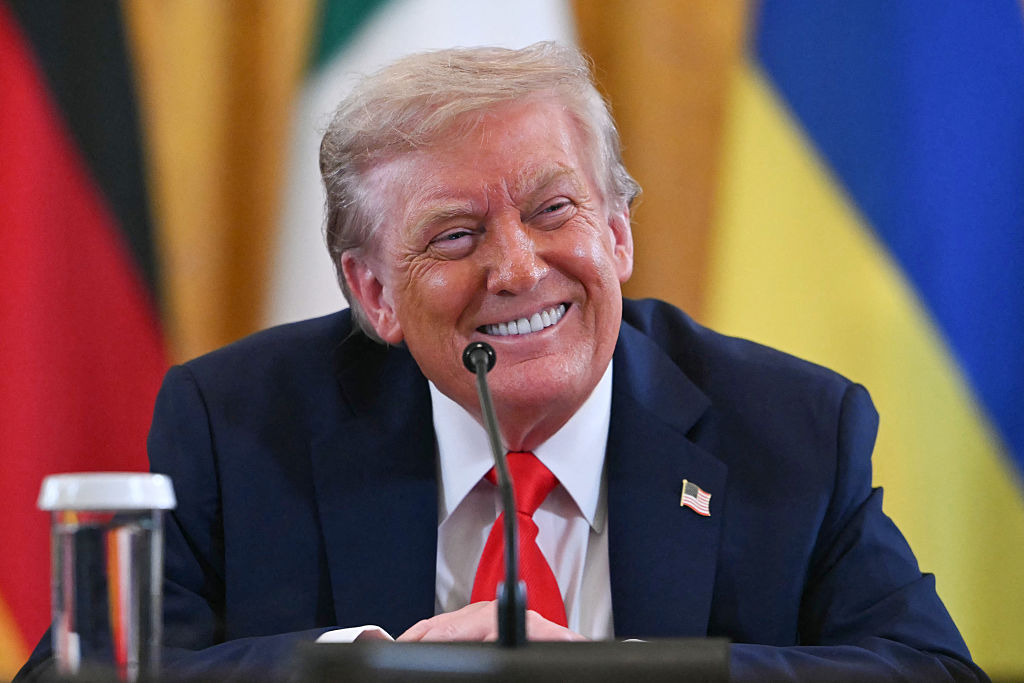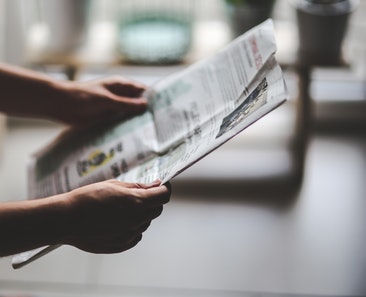Trump Falls For Europe’s Charm Offensive

This article is part of The D.C. Brief, TIME’s politics newsletter. Sign up here to get stories like this sent to your inbox.
The Europeans made the pilgrimage to Washington on a moment’s notice. They flattered their host, President Donald Trump, with praise for his ability to convene an impromptu peace summit with their Ukrainian counterpart, who in turn updated his fashion choices to fall in line with what White House officials expect from visitors. Above all, they made Trump feel every bit like the most powerful person on the planet.
[time-brightcove not-tgx=”true”]What’s more, Trump took their bait.
From the moment a week ago that Trump announced that he would meet that Friday with Russian President Vladimir Putin in Alaska, European leaders have come together with an Avengers-like unity to have the back of Ukrainian President counterpart Volodymyr Zelensky, whose nation was invaded more than three years ago by Putin’s forces. The leaders of the United Kingdom, France, Germany, Italy, and Finland, plus the heads of the European Commission and NATO, took part in a largely harmonious charm offensive meant to guide Trump back to a footing of support for the U.S. ally facing Russian belligerence. They heaped compliments on Trump in what can only be described as a diplomatic plea for a ceasefire that just days ago Trump walked away from. In turn, Trump did not rule out sending U.S. forces to help defend Ukraine. For the Europeans, things seemed to go as well as they could have imagined. In fact, it almost seemed the most unlikely of qualities in Trump’s Washington: normal.
Unlike Zelensky’s first trip back to Trump’s White House this term, there was none of the made-for-TV stage fighting. In February, with the world watching, Trump and Vice President J.D. Vance ambushed Zelensky in the Oval Office and proceeded to kick him and his delegation out. It made for drama but it left the wartime President unsure if Washington would keep in Kyiv’s column of supporters. Since then, Trump has softened slightly toward Zelensky, as Trump has grown frustrated that his charisma alone has not delivered an offramp for a brutal battle that has continued without pause, even amid Trump’s meetings with Putin and Zelensky.
Trump is famously fickle and famously susceptible to shameless praise, even when it seems to most outside observers as feigned. Sycophancy is a survival skill in the President’s orbit, and survivors know its currency. Cabinet meetings with Trump are ultimately a tour of department chiefs, each of whom knows to come ready with lavish compliments for their boss. Trump, as expected, responds with a wide grin.
Zelensky, having learned his lesson after a disastrous visit in February, returned on Monday with gratitude being shoveled in spades. Not only that, he traded in the military wardrobe he’s favored since Russia’s invasion in 2022 for one of an all-black field jacket and buttoned-up dress shirt. It set the stage for a warmer welcome from Trump, who from the start seemed pleased to have forced a wardrobe update based on his whims.
To be clear: This is not how the United States—or any rational government, really—should be deciding on strategy. It is obviously in the United States’ security interests to side with European nations standing with ally Ukraine against Russia, which now occupies about one-fifth of its neighbor. Europeans rightly worry an expanding Russia that is indifferent to sovereign borders is a threat to post-Cold War norms. A strong NATO alliance that includes the United States remains crucial for keeping a creeping post-Soviet Russia from metastasizing.
But those global currents matter less to Trump than his fragile ego. So the Europeans traded geopolitical arguments over decades of curbing Moscow’s ambitions for cheap praise. For the moment, it seems to have worked as Trump returned to the prospect of a trilateral summit with Ukraine and Russia, and himself as the arbiter.
“Everyone around this table wants peace,” French President Emmanuel Macron told Trump. Like others, Macron said Trump has a unique ability to convene a session where that peace may be scored—the latest example of Macron’s unique ability among European leaders to be their Trump whisperer.
The Europeans clearly had coordinated their approach and were speaking with one message if in eight different voices.
“The next steps ahead are the more complicated ones,’’ German Chancellor Friedrich Merz said, being upfront with his host. “I can’t imagine the next meeting will take place without a ceasefire,” he told Trump. But Trump has said a ceasefire was not necessary.
“If we can get a cease-fire, great,’’ Trump responded. He also said that it would be up to Zelensky and Putin to negotiate any such pause to the fighting. “As of this moment it’s not happening.”
Thus, it returns to a sequencing order: which comes first, a ceasefire or a trilateral meeting? That’s the question that seemed to persist even as the meetings unfolded across the White House’s campus. But one thing was clear: he who gives Trump the biggest ego boost is likely to come out ahead.
“I think he wants to make a deal with me—you understand that?—as crazy as it sounds,” Trump was heard on a hot mic making small talk ahead of that one-way praise fest. It remains a matter of debate, though, if Trump is correct or just projecting there. Given the opportunity to press their luck, the Europeans instead decided to push laudatory comments that would not draw any backlash. Ultimately, that strategy may preserve Ukraine and settle the borders of Europe’s map.
Make sense of what matters in Washington. Sign up for the D.C. Brief newsletter.



